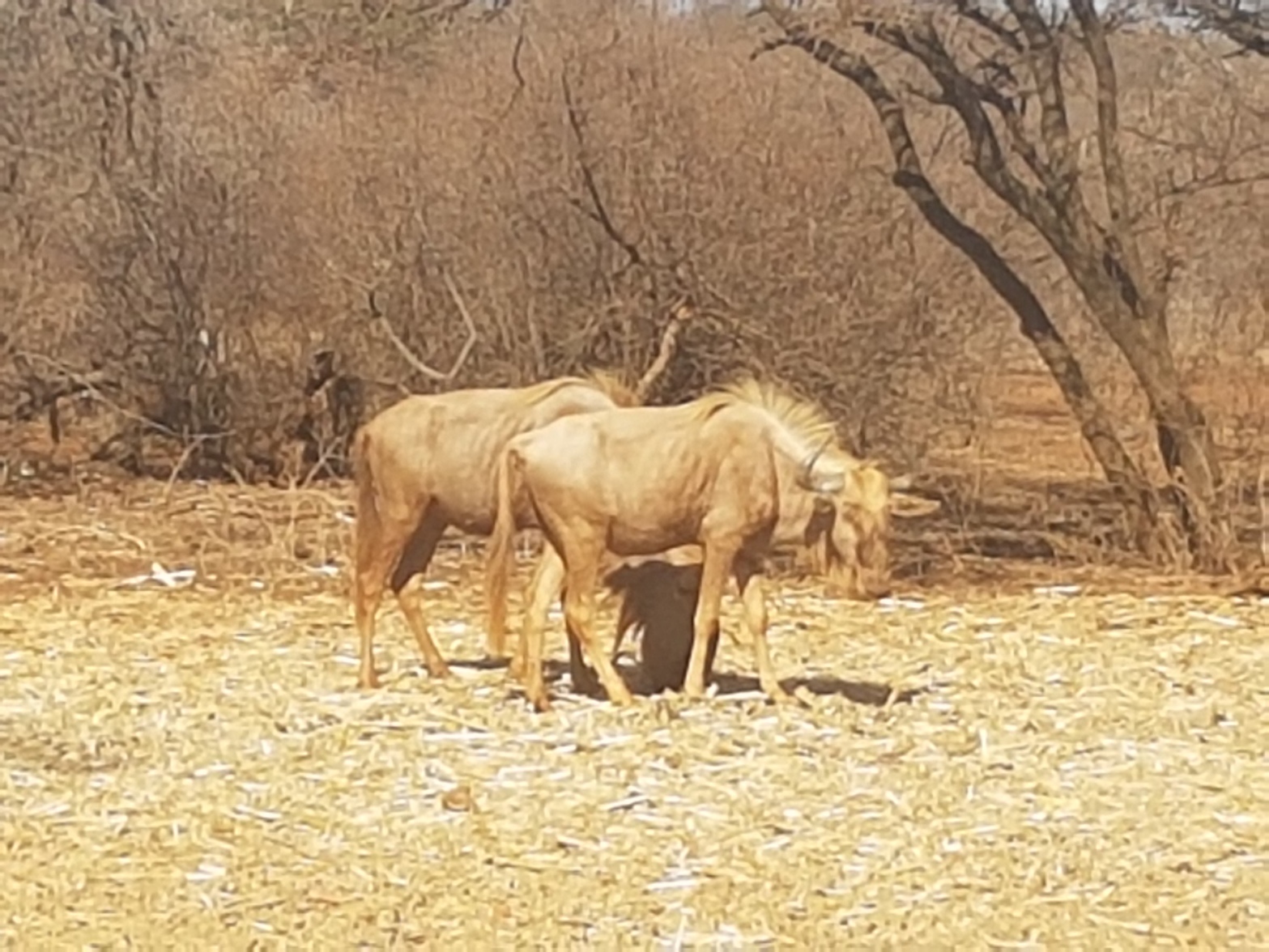Have you heard of the rare Golden Wildebeest? Have you seen this animal, which was once thought mythical?

The collective noun for all species of wildebeest (also called gnu), is a confusion. They do get confused quite easily; they’re not regarded as being particularly bright. Pretty stupid actually.
On a hot day in the middle of the Limpopo bush, I was the one who was confused – I was looking at wildebeest, but these wildebeest-like animals were strange. These wildebeest were bright, as in a bright shade of bronzy gold. My host laughed, he’d seen my type of expression often enough, and he explained that there are actually only two different species of wildebeest, or gnu as they’re also called: the common Blue Wildebeest (Connochaetes taurinus) , which is a grey/ charcoal colour, with a black tail. The second species is the more unusual Black Wildebeest (Connochaetus gnou) which is black, with a white tail.

The Golden wildebeest is real; they’re unusual and rare, and are generally only seen on private reserves. Their colouring is due to a recessive gene in Blue Wildebeest . Recessive genes create anomalies in nature: white lions, black leopards, white Impala, and black Springbok, are all caused by recessive genes.
The Golden Wildebeest is seldom seen in the wild, as their unusual colouring makes them easy prey for predators. Originally named Golden Wildebeest by the Khoi people of the area, the wildebeest was first described in the 1920s by the early farmers in the region and named the Vos Wildebeest (Vos is pronounced Fos). Some hunters knew it as a Red Wildebeest. It was thought to have been a cross between the Black Wildebeest and The Blue Wildebeest, by the hunters of that era, and was sought after as a trophy.

Extensive testing has proved it to be an uncommon mutation. The first animal was captured in the early 1990s, and they have successfully been bred since then, on specialized game breeding farms, mostly situated in the Limpopo Province of South Africa.
Just as the early hunters sought out this animal as a prized trophy, so do the hunters of today. Most are bred on hunting ‘farms’, and the price tag of hunting one of these unusual animals is in the region of USS7000.00.









- Top row: Buffalo are also bred for hunting. Sable are a popular trophy animal. A hunting lodge in the Limpopo bush.
- Middle row: Baobabs and red soil in Limpopo. A naughty bushbuck helps himself to food at the breeding facility.
- Bottom row: The wide and dry expanses of Limpopo. A curious ostrich. A Golden Wildebeest. Notice on the gate of the breeding and hunting facility.
As their colouring is not conducive to surviving wild in the bush, these animals can only be seen on private reserves.
